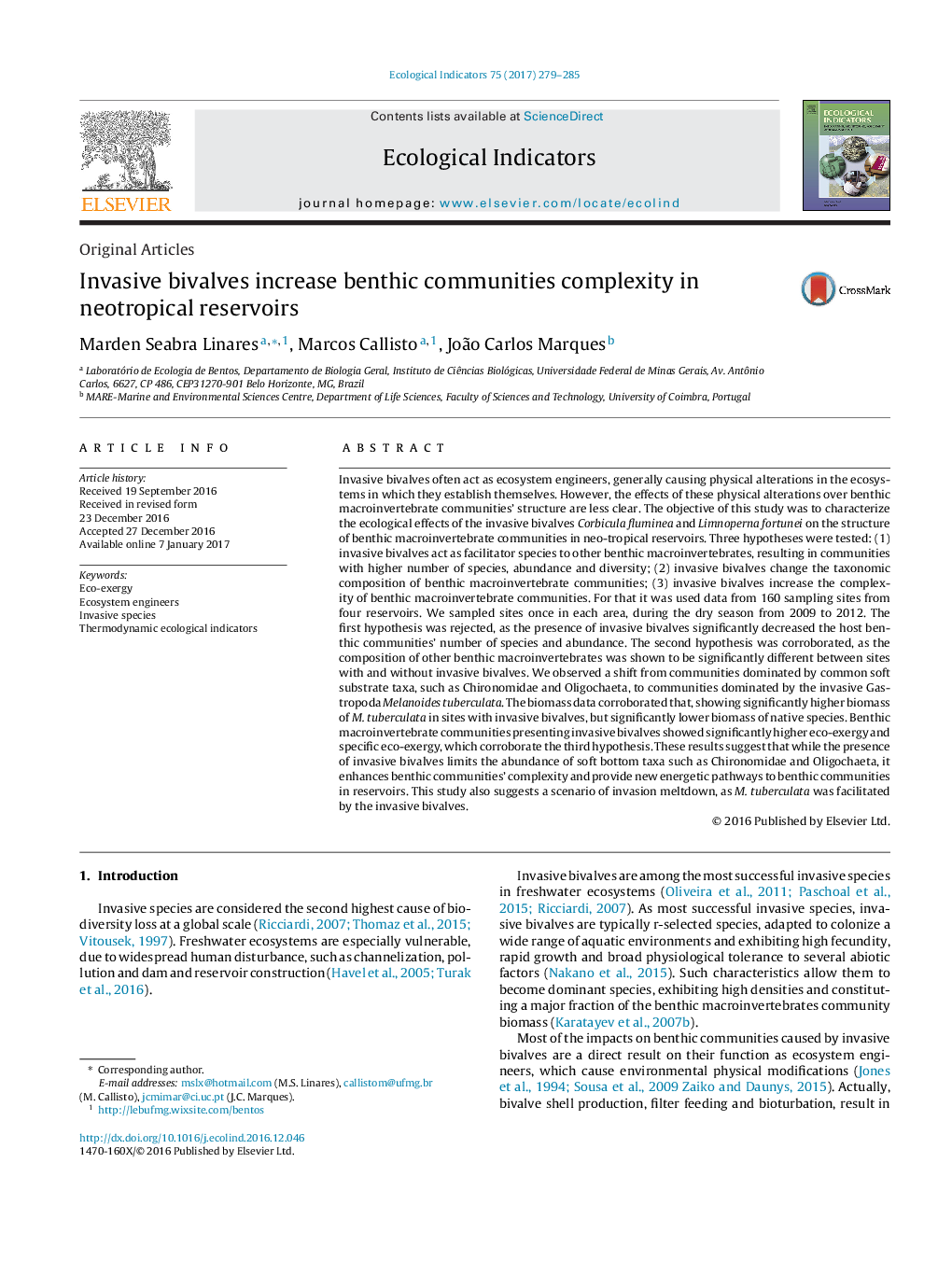| کد مقاله | کد نشریه | سال انتشار | مقاله انگلیسی | نسخه تمام متن |
|---|---|---|---|---|
| 5741819 | 1617127 | 2017 | 7 صفحه PDF | دانلود رایگان |
- Invasive bivalves do not act as facilitators for benthic macroinvertebrate communities.
- Benthic macroinvertebrate communities become more complex with the presence of invasive bivalves.
- Eco-exergy and specific eco-exergy are able to capture the effects of biological invasion over the complexity of benthic macroinvertebrate communities.
- Results suggest an invasion meltdown scenario with the invasive bivalves being followed by the invasive gastropod Melanoides tuberculata.
Invasive bivalves often act as ecosystem engineers, generally causing physical alterations in the ecosystems in which they establish themselves. However, the effects of these physical alterations over benthic macroinvertebrate communities' structure are less clear. The objective of this study was to characterize the ecological effects of the invasive bivalves Corbicula fluminea and Limnoperna fortunei on the structure of benthic macroinvertebrate communities in neo-tropical reservoirs. Three hypotheses were tested: (1) invasive bivalves act as facilitator species to other benthic macroinvertebrates, resulting in communities with higher number of species, abundance and diversity; (2) invasive bivalves change the taxonomic composition of benthic macroinvertebrate communities; (3) invasive bivalves increase the complexity of benthic macroinvertebrate communities. For that it was used data from 160 sampling sites from four reservoirs. We sampled sites once in each area, during the dry season from 2009 to 2012. The first hypothesis was rejected, as the presence of invasive bivalves significantly decreased the host benthic communities' number of species and abundance. The second hypothesis was corroborated, as the composition of other benthic macroinvertebrates was shown to be significantly different between sites with and without invasive bivalves. We observed a shift from communities dominated by common soft substrate taxa, such as Chironomidae and Oligochaeta, to communities dominated by the invasive Gastropoda Melanoides tuberculata. The biomass data corroborated that, showing significantly higher biomass of M. tuberculata in sites with invasive bivalves, but significantly lower biomass of native species. Benthic macroinvertebrate communities presenting invasive bivalves showed significantly higher eco-exergy and specific eco-exergy, which corroborate the third hypothesis. These results suggest that while the presence of invasive bivalves limits the abundance of soft bottom taxa such as Chironomidae and Oligochaeta, it enhances benthic communities' complexity and provide new energetic pathways to benthic communities in reservoirs. This study also suggests a scenario of invasion meltdown, as M. tuberculata was facilitated by the invasive bivalves.
Journal: Ecological Indicators - Volume 75, April 2017, Pages 279-285
